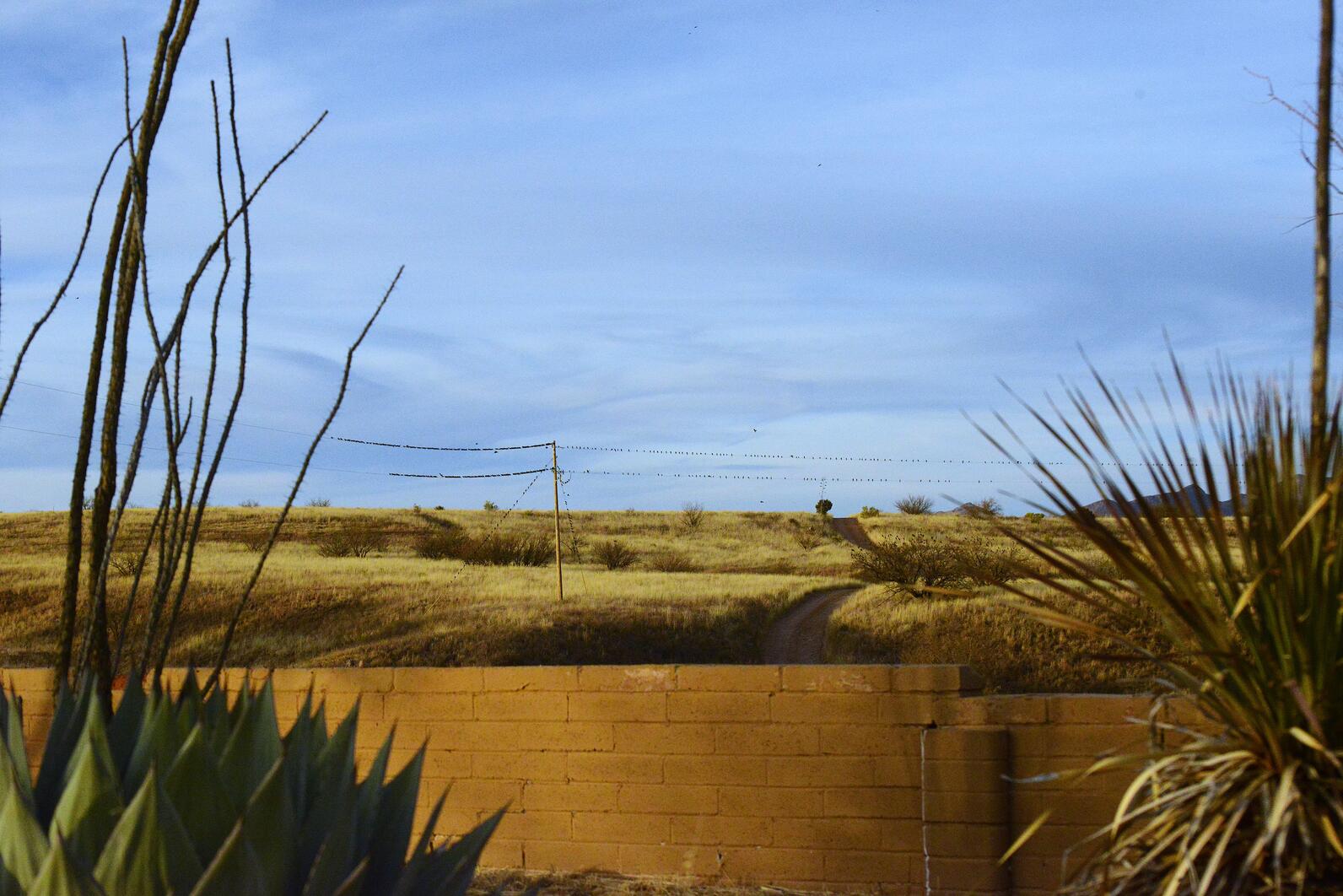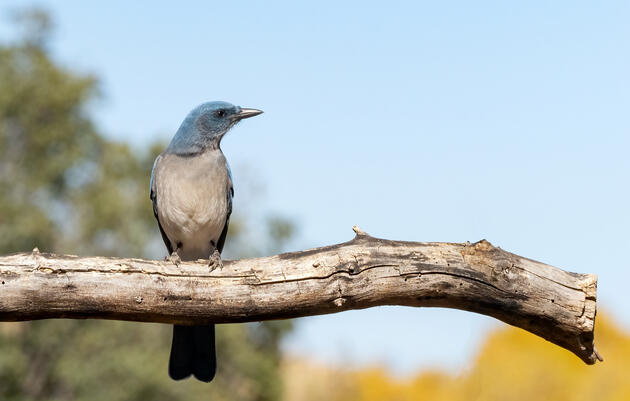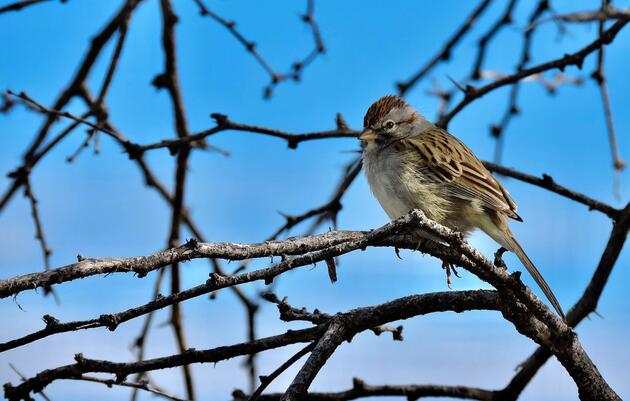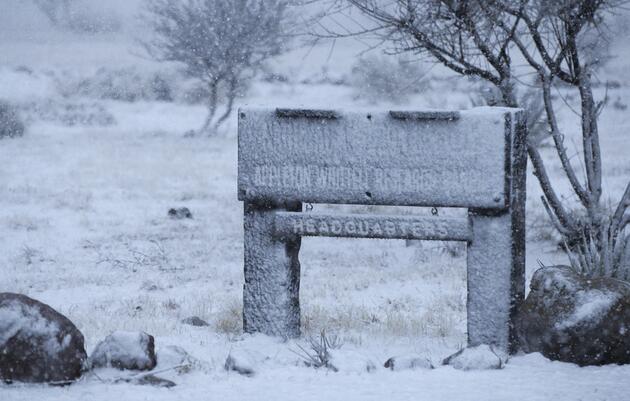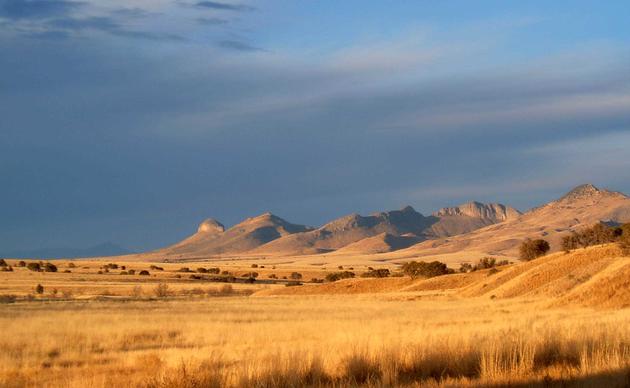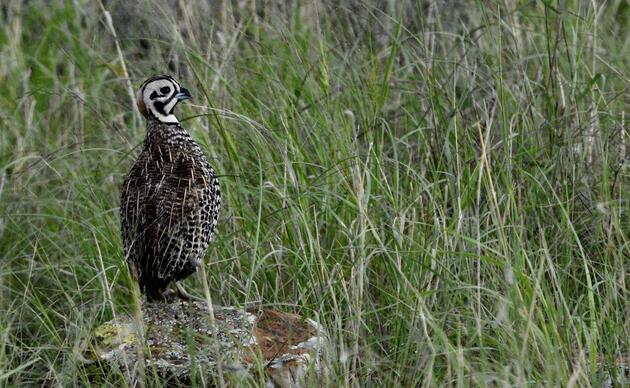Each year in early January, volunteers head into the field to participate in the annual Appleton-Whittell Christmas Bird Count. Our contribution to the national Christmas Bird Count effort, the oldest community science project in North America, this count includes the towns of Sonoita, Elgin, and Canelo, pieces of the Huachuca Mountains and Canelo Hills, and of course the grasslands, riparian corridors, and oak woodlands of the Research Ranch itself.
As count day approaches, Research Ranch staff typically have the weather on their minds. Will winter rain or snow render our roads impassable? Will the clouds break by midday, giving us and our volunteers a welcome bit of sun? Will the wind ever die down, allowing us a few fleeting moments in which to count? This year, however, with mostly sunny skies, no precipitation in the recent or near forecast, and temperatures reaching 80 degrees (the highest since the count began in 2006), our concerns proved unwarranted. The unusual weather was obvious to the 43 volunteers who joined us for the count, but can it be seen in the data?
In total, 103 species were observed during this year’s count. This reflects a jump from the 89 counted last year (an all-time low) and differs little from the count’s average, but still fits in with a slight downward trend observed since the count hit its high mark of 119 species in 2008. The number of individual birds also increased this year to 6,552 birds, nearly twice the 3,742 observed last year and well above the count’s average. To make sense of the numbers, it helps to dig into trends observed within individual species and groups of birds.
Most notably, the data show an increase in the prevalence of desert and semi-desert adapted species and a decline in grassland specialists. This was seen in the sparrows with Black-throated Sparrows on the rise and Savannah Sparrows declining and in the quail with Gambel’s Quail increasing and Montezuma Quail decreasing. Missing from the count were the ducks and shorebirds that typically grace the ponds and stock tanks found across the Sonoita Plain. With the lack of precipitation leaving water levels low, these birds were elsewhere on count day. Some exciting, notable observations include the sighting of an Elegant Trogon during count week, a single Mountain Bluebird that has been calling the Research Ranch home all winter, and over 3,000 Brewer’s Blackbirds which, when subtracted from the total, leave the count much close to its typical average.
It can be difficult to clearly identify trends by comparing a single year’s data with the counts historical totals, but the overall story is clear: a warming, drying climate is leading to the desertification of Southeastern Arizona’s grasslands. This change is likely to be felt hardest by the grassland specialists that rely on the uniqueness of these grasslands and by the resident (non-migratory) birds that are stuck contending with Arizona’s changing climate year-round. Time will tell what a changing climate means for the birds and other wildlife found on the Research Ranch, and we’re grateful to our volunteers for joining us each year to collect the data.
For more information about participating in next year’s count, email researchranch@audubon.org.
